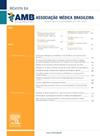Venous thromboembolism in women.
IF 1.3
4区 医学
Q2 MEDICINE, GENERAL & INTERNAL
Revista da Associacao Medica Brasileira
Pub Date : 2023-08-04
eCollection Date: 2023-01-01
DOI:10.1590/1806-9282.2023S128
引用次数: 0
Abstract
INTRODUCTION Pregnant women have all the following three etiopathogenic components of Virchow’s triad: (a) venous stasis, caused by compression of the inferior vena cava and left common iliac vein by the gravid uterus and by reduced venous tone because of the myorelaxant action of progesterone; (b) hypercoagulability, secondary to induction of hepatic synthesis of coagulation factors VII, VIII, and X by placental estriol, increased levels of fibrinogen and plasminogen activator inhibitor types I and II, and reduced synthesis of protein S; and (c) endothelial injury, which occurs during nidation, endovascular remodeling of the uterine spiral arteries, and expulsion of the placenta1,2. During pregnancy, the risk of venous thromboembolism (VTE) increases by 5–10 times and can be 35 times higher during puerperium when compared with the rate among non-pregnant women of the same age. After delivery, the frequency reduces rapidly, but there is a residual risk for up to 12 weeks. Approximately two-thirds of deep venous thrombosis (DVT) occurs during the gestational period, equally distributed across the three trimesters. However, 43–60% of pulmonary embolism episodes occur during the first 6 weeks of the puerperium1,2. Among pregnant women, when compared with non-pregnant women, DVTs in the left lower limb (90 vs. 55%) and the iliofemoral segment (72 vs. 9%) are even more predominant. This is because of the accentuated compression of the left common iliac vein against the fifth lumbar vertebra by the right common iliac artery, caused by the gravid uterus1,2. The main risk factors for VTE during pregnancy are overweight, obesity, age of 35 years or more, inherit or acquired thrombophilias, long-distance travel, immobility, hospital admission during pregnancy, certain comorbidities (inflammatory intestinal disease, urinary tract infection, systemic lupus erythematosus, pregnancy-induced systemic arterial hypertension or pre-eclampsia, and non-obstetric antenatal surgery), obstetric hemorrhage, and hyperemesis. Prevention of VTE in pregnancy by means of application of guidelines and implementation of mechanical and/or pharmacological prophylaxis is still the best strategy for reducing the rate of these events1,2.女性静脉血栓栓塞。
本文章由计算机程序翻译,如有差异,请以英文原文为准。
求助全文
约1分钟内获得全文
求助全文
来源期刊
CiteScore
2.20
自引率
0.00%
发文量
276
审稿时长
12 weeks
期刊介绍:
A Revista da Associação Médica Brasileira (RAMB), editada pela Associação Médica Brasileira, desde 1954, tem por objetivo publicar artigos que contribuam para o conhecimento médico.

 求助内容:
求助内容: 应助结果提醒方式:
应助结果提醒方式:


